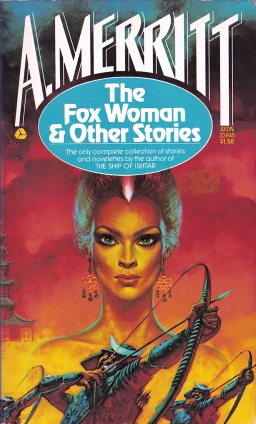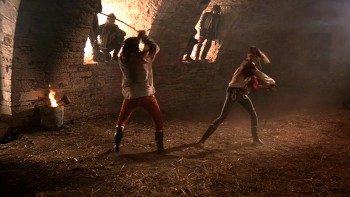Three Against the Stars Blasts Off for Intergalactic Adventure

 Three Against the Stars is the second book I’ve read by Joe Bonadonna. Unlike his sword & sorcery work, this marks a venture into pure space fantasy. My knowledge of the genre is admittedly spotty. I was unfamiliar with the works of Edmond Hamilton and E. E. “Doc” Smith, who are both cited as influences, but part of the joy of genre fiction is that one does not need to have an encyclopedic knowledge of all that has gone before since the influences are so pervasive, much of it strikes one as easily recognizable.
Three Against the Stars is the second book I’ve read by Joe Bonadonna. Unlike his sword & sorcery work, this marks a venture into pure space fantasy. My knowledge of the genre is admittedly spotty. I was unfamiliar with the works of Edmond Hamilton and E. E. “Doc” Smith, who are both cited as influences, but part of the joy of genre fiction is that one does not need to have an encyclopedic knowledge of all that has gone before since the influences are so pervasive, much of it strikes one as easily recognizable.
This tale of space marines calls to mind the works of Robert Heinlein, while the space war itself strongly reminded me of Malcolm Hulke’s early seventies Doctor Who serial, “Frontier in Space” with the Earth Empire brought to the brink of war with the lizard-like Draconian Empire thanks to acts of terror committed by the apelike Ogrons. What sets Bonadonna’s work apart from so many others who share similar influences is that he is able to authentically capture the fun and innocence without sacrificing intelligent commentary on war and imperialism.
This is an Airship 27 publication and art director Rob Davis does his usual stellar job of ensuring that their titles stand out as the most eye-catching on the market today. Laura Givens’s cover art perfectly captures the space fantasy artwork from publishers like Ace, Lancer, Del Rey, and Ballantine from decades past. Interior black & white illustrations by Pedro Cruz have a classy retro-style that one associates more with slicks than pulps. The decision to go with a more sophisticated style of illustration is well-suited to Bonadonna’s story, which has familiar elements, but offers a more philosophical dimension than one generally finds in pulp fiction.






 One of the oddest, most esoteric regrets in my life is that I long ago gave away my collection of the now defunct American Film magazine. Most of these, purchased primarily from sidewalk vendors in Manhattan, I do not care to recover; but I would give a great deal to have again the October issue from 1986. It contains a dialogue with film producer David Puttnam, and one small paragraph in that interview taught me more about collaboration than any other single event I know.
One of the oddest, most esoteric regrets in my life is that I long ago gave away my collection of the now defunct American Film magazine. Most of these, purchased primarily from sidewalk vendors in Manhattan, I do not care to recover; but I would give a great deal to have again the October issue from 1986. It contains a dialogue with film producer David Puttnam, and one small paragraph in that interview taught me more about collaboration than any other single event I know.
